Evolutionary relationships, biogeography and morphological characters of Glinus (Molluginaceae), with special emphasis on the genus composition in Sub-Saharan Africa
- PMID: 33679173
- PMCID: PMC7921084
- DOI: 10.3897/phytokeys.173.60898
Evolutionary relationships, biogeography and morphological characters of Glinus (Molluginaceae), with special emphasis on the genus composition in Sub-Saharan Africa
Abstract
Glinus is a small genus of Molluginaceae with 8-10 species mostly distributed in the tropics of the World. Its composition and evolutionary relationships were poorly studied. A new molecular phylogeny constructed here using nuclear (ITS) and chloroplast (rbcL, trnK-matK) markers confirmed the monophyly of the genus. Based on ITS analysis, the following well-supported lineages are present within Glinus: the G. bainesii lineage is recovered as sister to the remainder of the genus followed by G. oppositifolius. Three other clades are: G. hirtus with G. orygioides; G. radiatus and G. lotoides; the latter is represented by a sample from North America, and G. zambesiacus as sister to G. setiflorus + G. lotoides + G. dictamnoides. On the plastid gene tree, G. bainesii + G. oppositifolius form a sister clade to all other Glinus species. The next clade is formed by G. hirtus and G. orygioides followed by G. radiatus plus an American sample of G. lotoides. The next branch comprises G. setiflorus as sister to G. zambesiacus + G. lotoides + G. dictamnoides. Glinus seems to have originated from Africa around the Late Eocene or Early Miocene, with further radiations to Australia and the Americas during the Late Miocene or Late Pliocene. Compared with the previous limited character set used for the diagnostics, we have found ten new morphological and carpological traits distinguishing Glinus members. In both trees based on nuclear and plastid datasets, the major phylogenetic clades cannot be characterized by the peculiar morphological characters. Many shared character states leading to their contrasting pattern in the multivariate analysis model are interpreted as a high homoplasy in the phylogenetically distant species. We paid special attention to the composition of the genus in Sub-Saharan Africa, a region with the greatest species diversity. Our results provide new insight into the taxonomy of Glinus in this region. Glinus lotoides var. virens accepted in many previous works is a synonym of G. dictamnoides that is closely related to G. lotoides based on molecular analysis and morphological characters. The status of the American populations of G. lotoides needs further investigation due to different characters of the specimens from the Old and the New World. Many specimens previously identified as G. lotoides var. virens and as the intermediates G. lotoides × G. oppositifolius belong to G. zambesiacus sp. nov. and G. hirtus comb. nov. (≡ Mollugo hirta); the latter species is resurrected from synonymy after 200 years of unacceptance. In some African treatments, G. hirtus was known under the invalidly published name G. dahomensis. Glinus zambesiacus is distributed in the southern and eastern parts of tropical Africa, and G. hirtus previously assumed to be endemic to West Africa is indeed a species with a wide distribution across the tropical part of the continent. Glinus microphyllus previously accepted as endemic to West Tropical Africa together with other new synonyms (G. oppositifolius var. lanatus, G. herniarioides, Wycliffea rotundifolia) is considered here as G. oppositifolius var. keenaniicomb. nov. (≡ Mollugo hirta var. keenanii), a variety found across the entire distribution of G. oppositifolius (Australia, Asia, and Africa). The presence of the American G. radiatus in Africa is not confirmed, and all records of this species belong to G. hirtus. The lectotypes of some names (G. dictamnoides, G. herniarioides, Mollugo hirta, M. setiflora, Pharnaceum pentagynum, Wycliffea) as well as a neotype of G. trianthemoides are designated. A new key to the identification of all Glinus species in Sub-Saharan Africa is provided. A checklist is given of all accepted species in this region (G. bainesii, G. hirtus, G. lotoides, G. oppositifolius s.l., G. setiflorus, and G. zambesiacus) with their nomenclature, morphological description and geographical distribution.
Keywords: Glinus; Molluginaceae; Biogeography; Sub-Saharan Africa; molecular phylogeny; taxonomic revision.
Alexander P. Sukhorukov, Alexander Sennikov, Marie Claire Veranso-Libalah, Maria Kushunina, Maya V. Nilova, Roger Heath, Alison Heath, Yuri Mazei, Maxim A. Zaika.
Figures

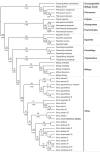





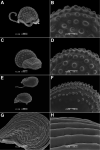




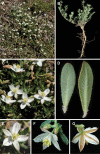

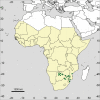
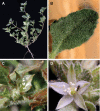

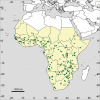




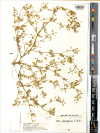



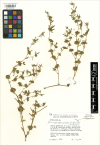

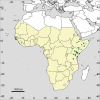
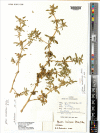
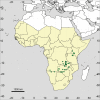
References
-
- Adamson RS. (1961) The South African species of Aizoaceae. IX. Glinus. The Journal of South African Botany 27: 125–130.
-
- Akoegninou A, van der Burg WJ, van der Maesen LJG. (2006) Flore analytique du Bénin. Backhuys Publishers, Cotonou, Wageningen.
-
- Almeida MR. (1998) Flora of Maharashtra, Vol. 2. St. Xavier’s College, Mumbai.
-
- APD [African Plant Database] (2019) Version 3.4.0. Conservatoire et Jardin botaniques de la Ville de Genève and South African National Biodiversity Institute, Pretoria. http://www.ville-ge.ch/musinfo/bd/cjb/africa/ [accessed 09 September 2019]
LinkOut - more resources
Full Text Sources
Other Literature Sources
Miscellaneous
